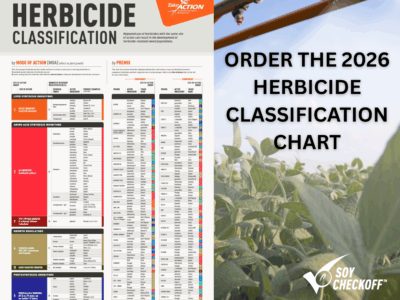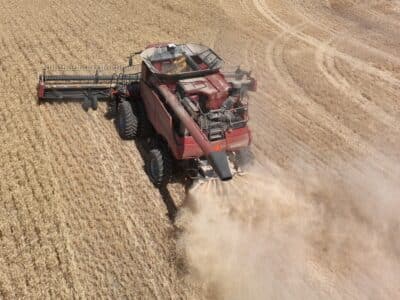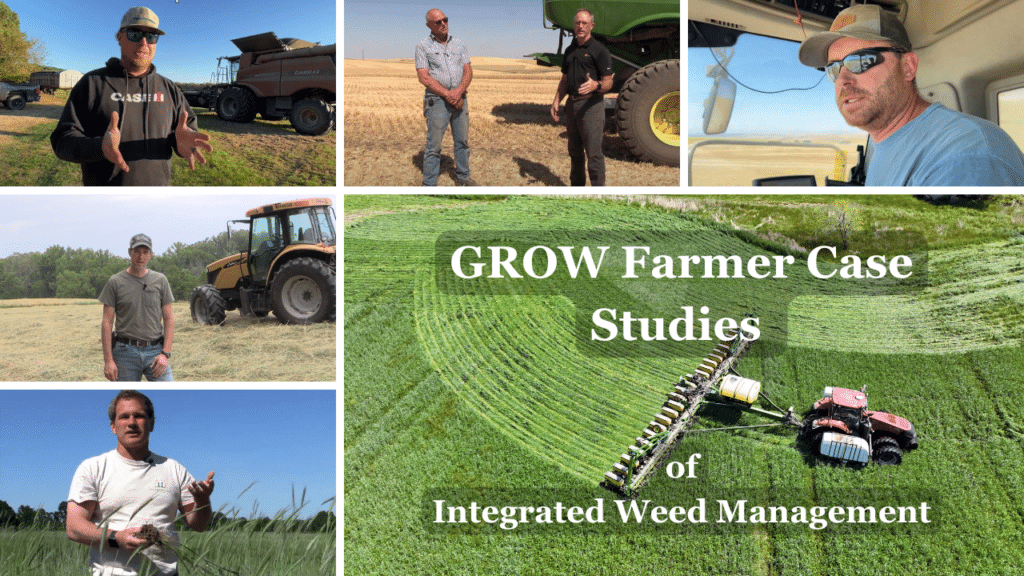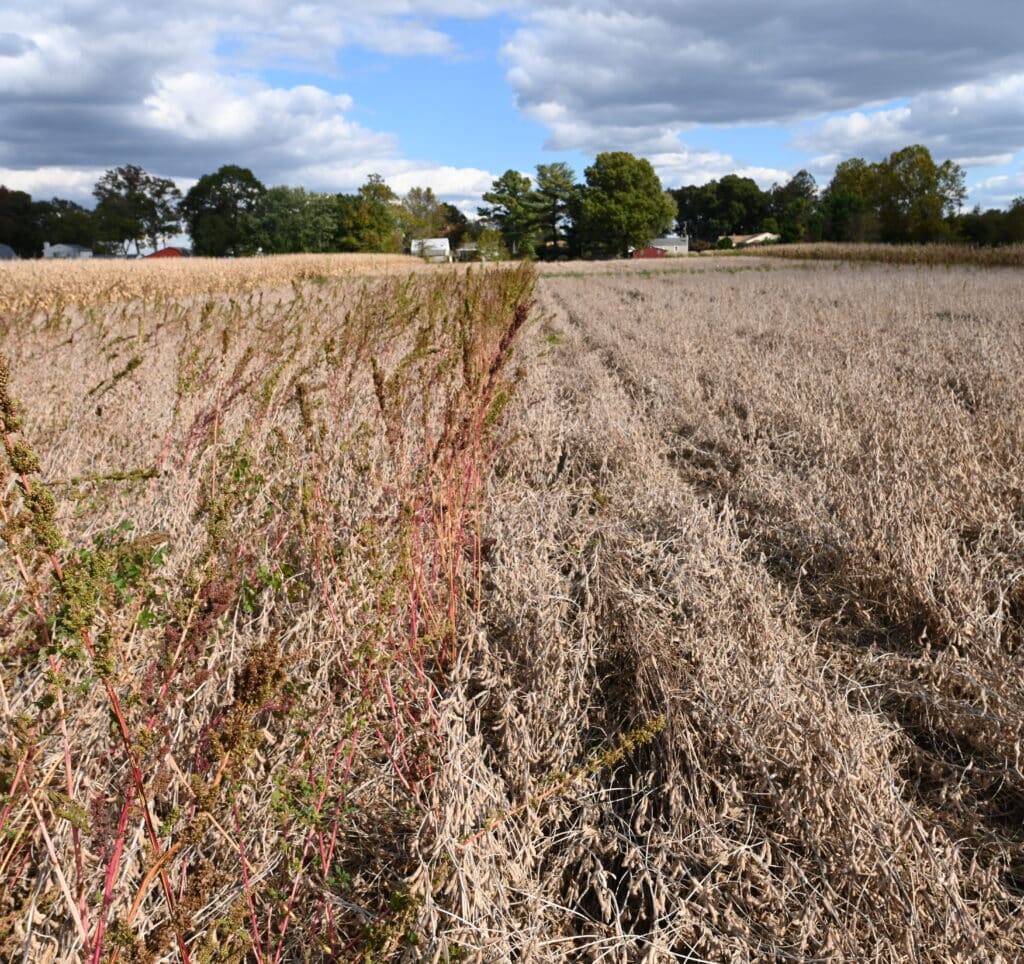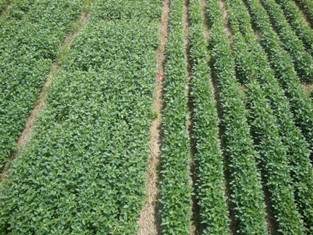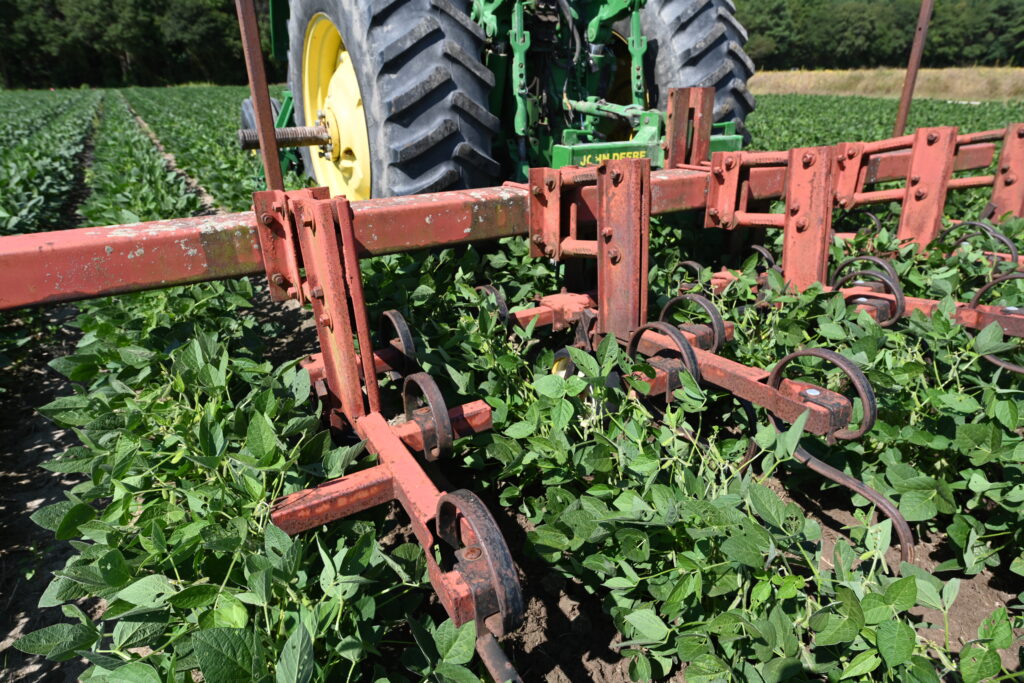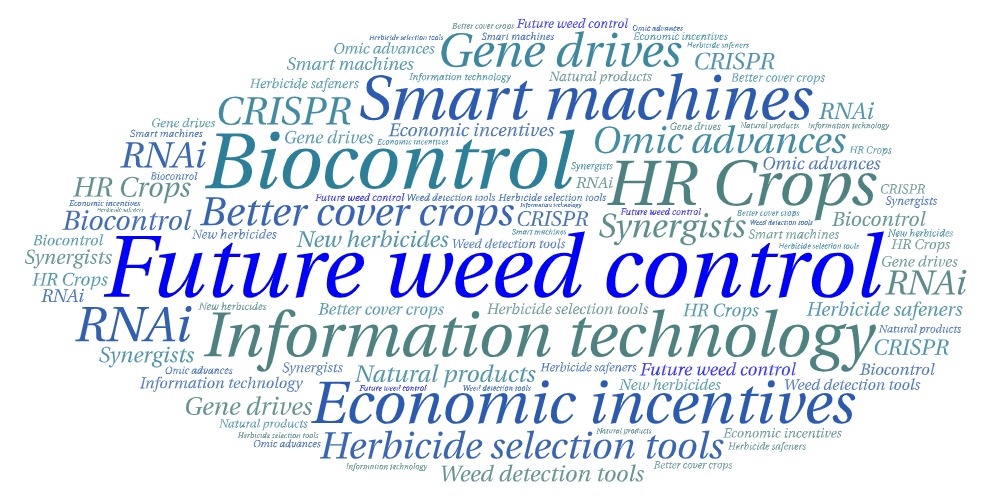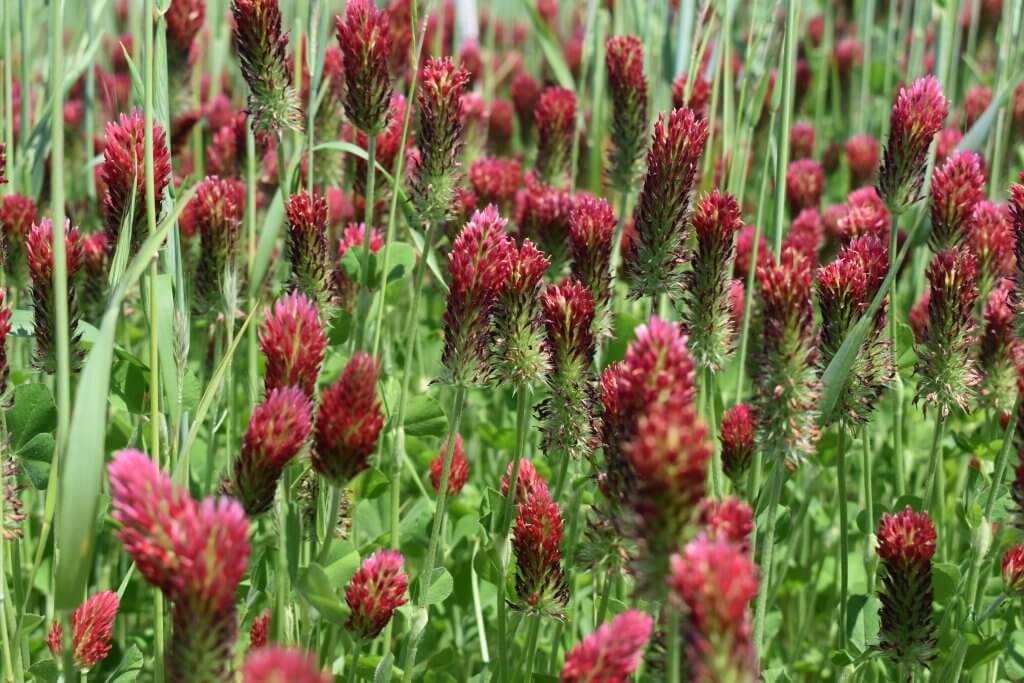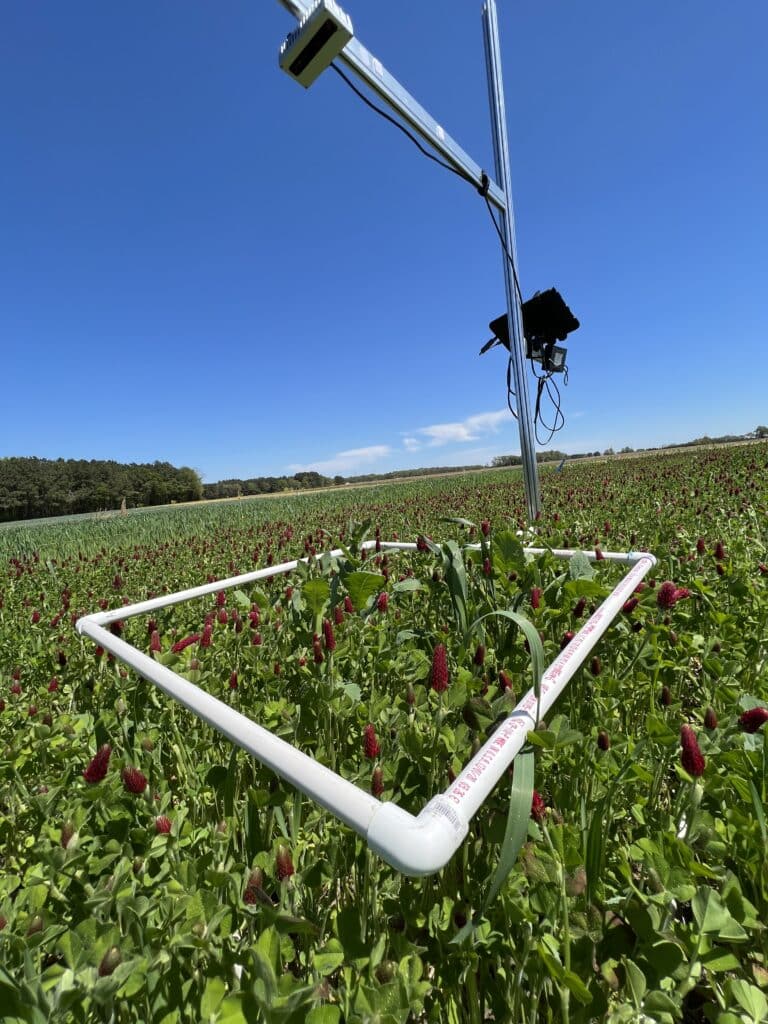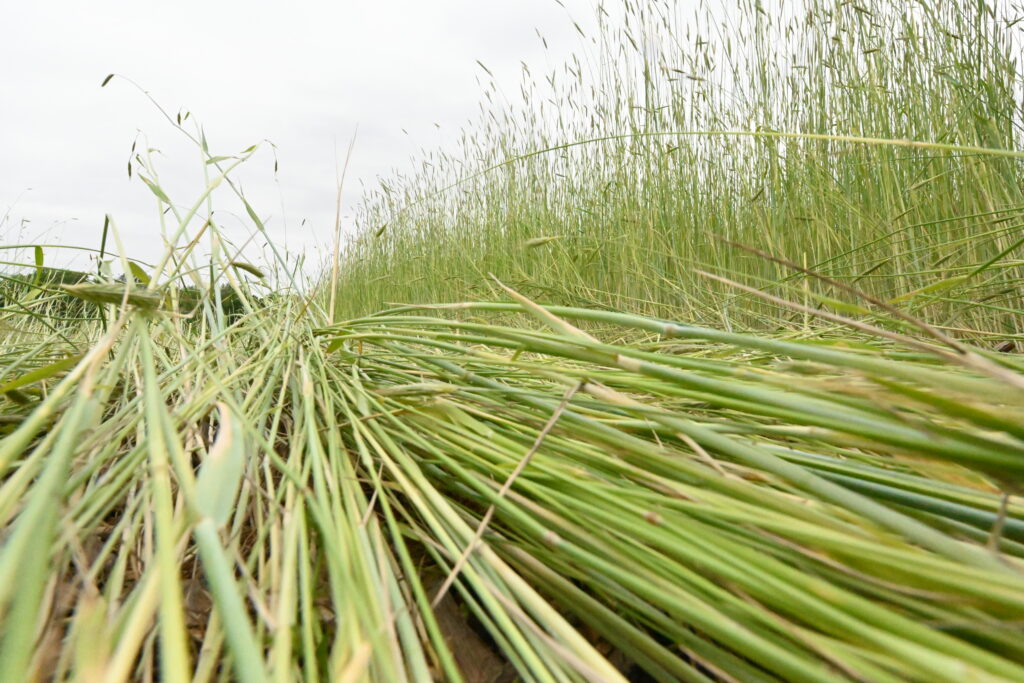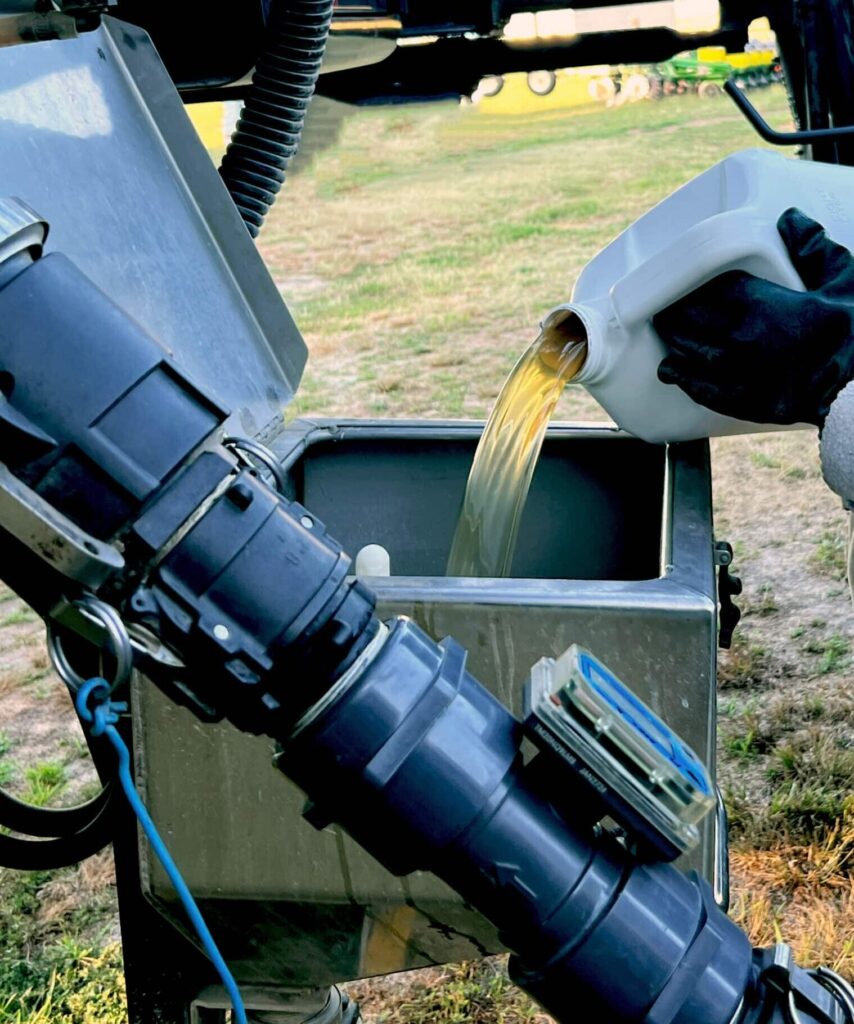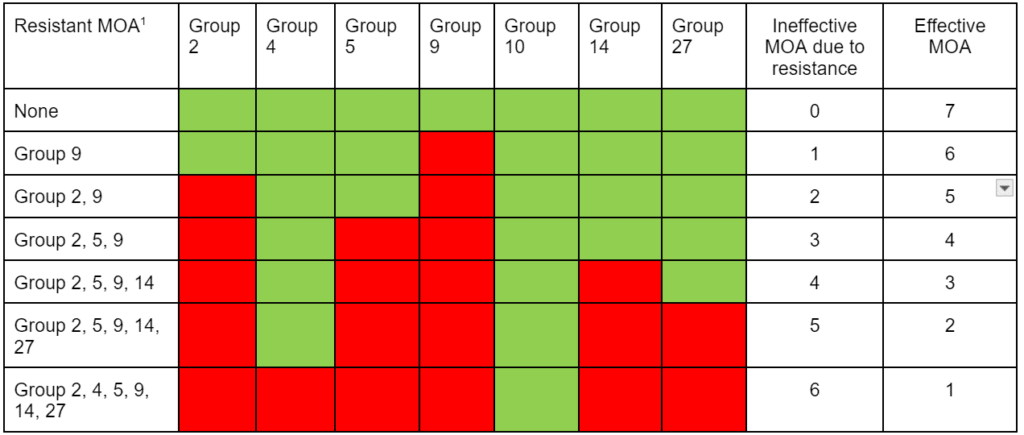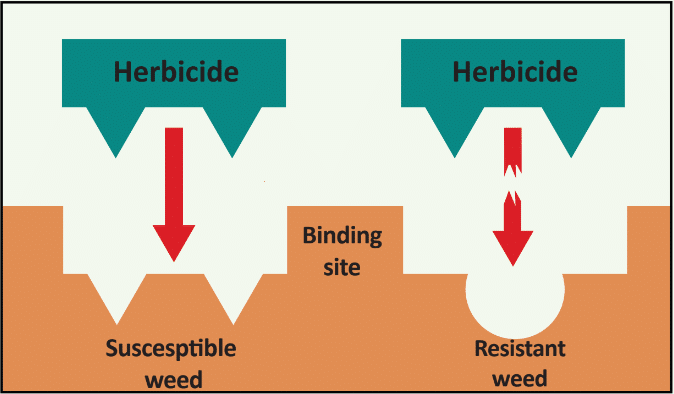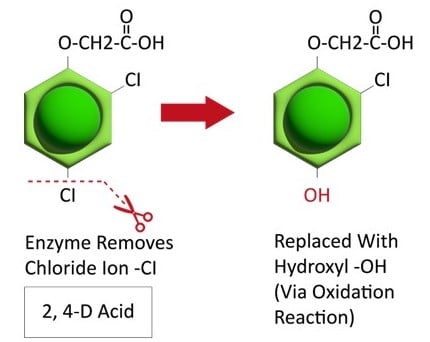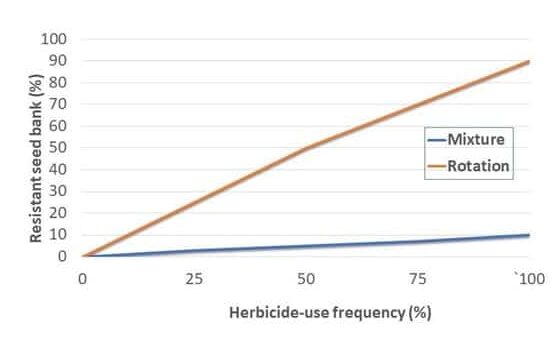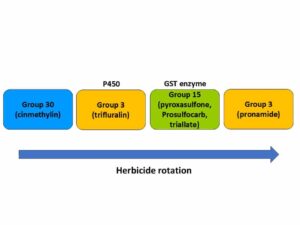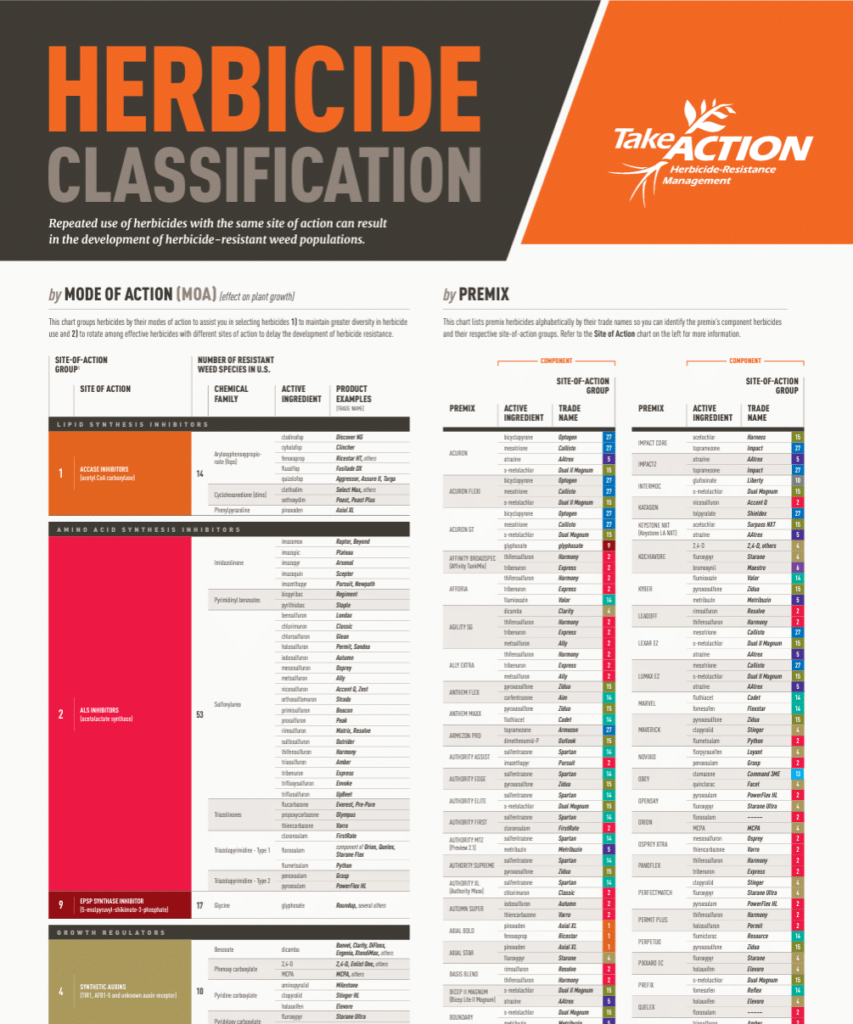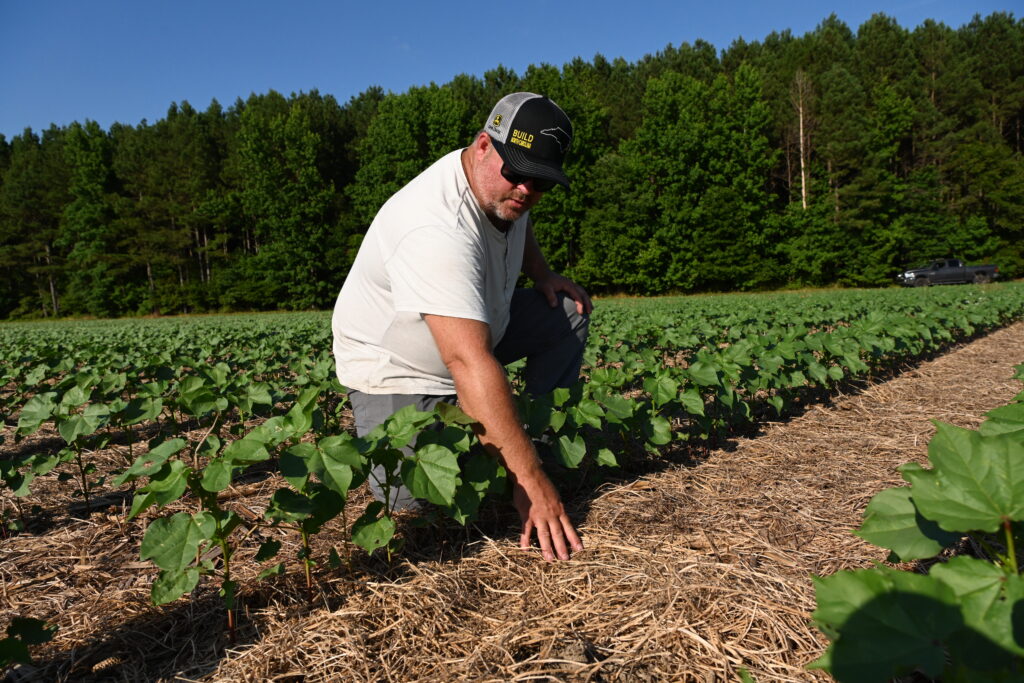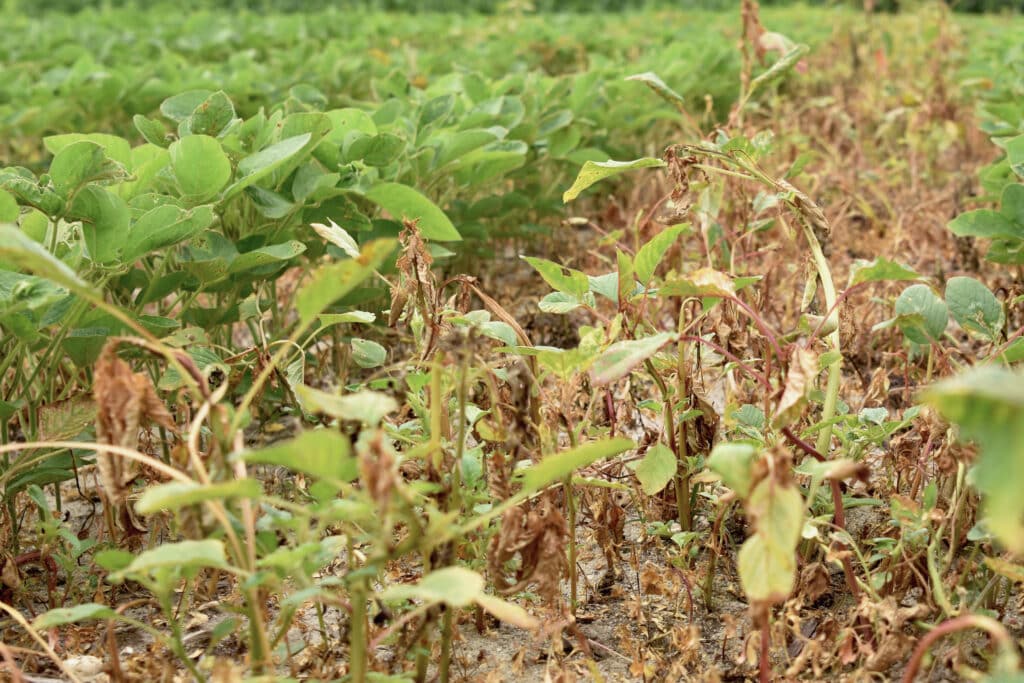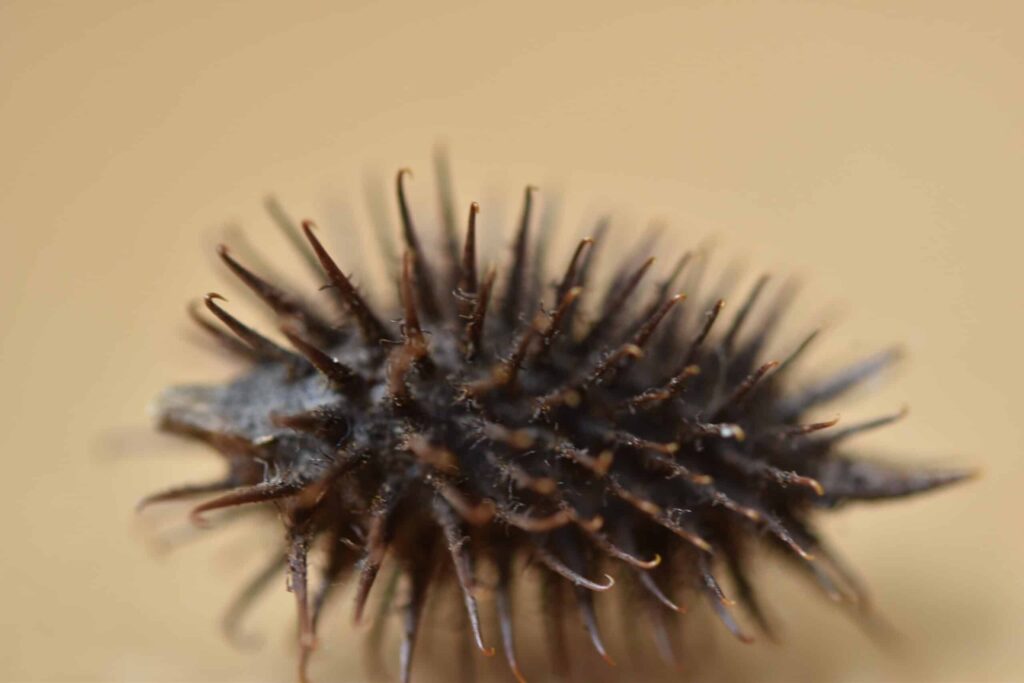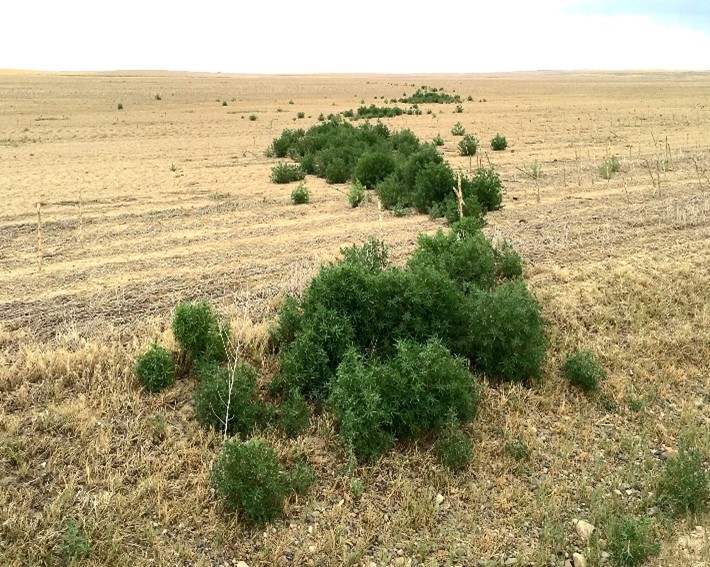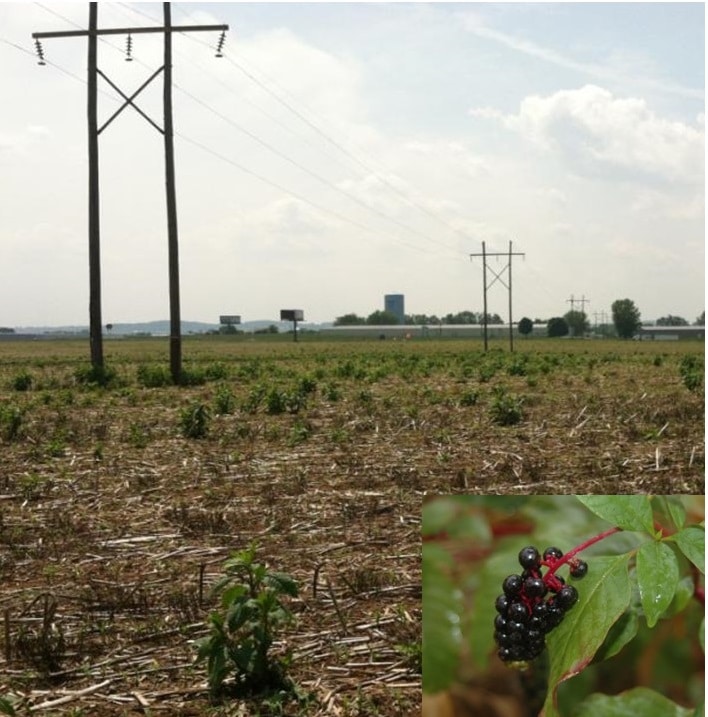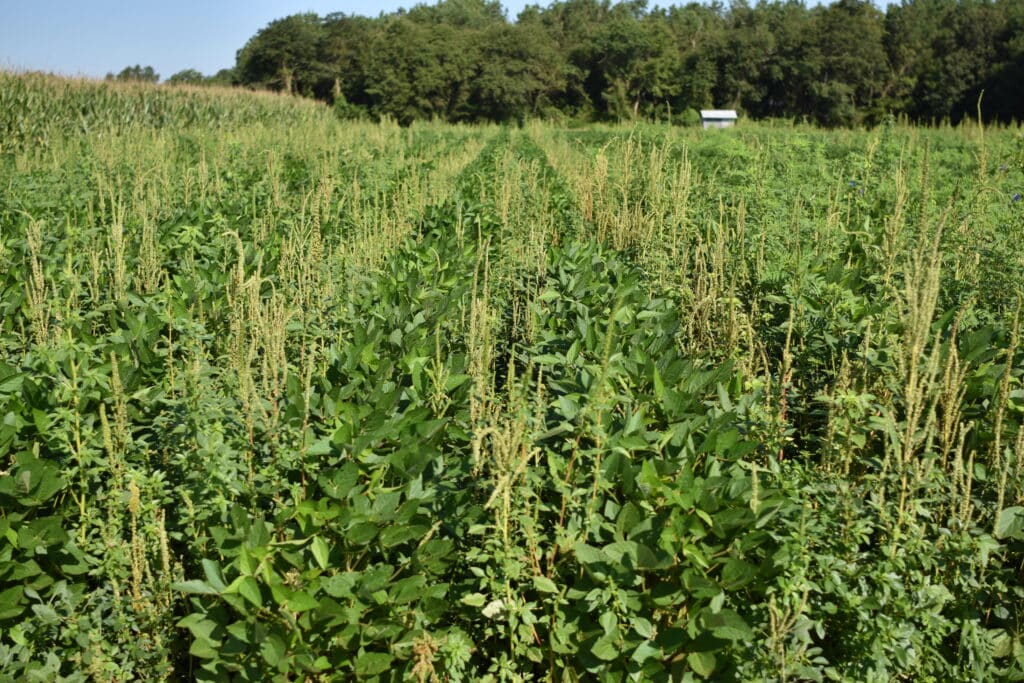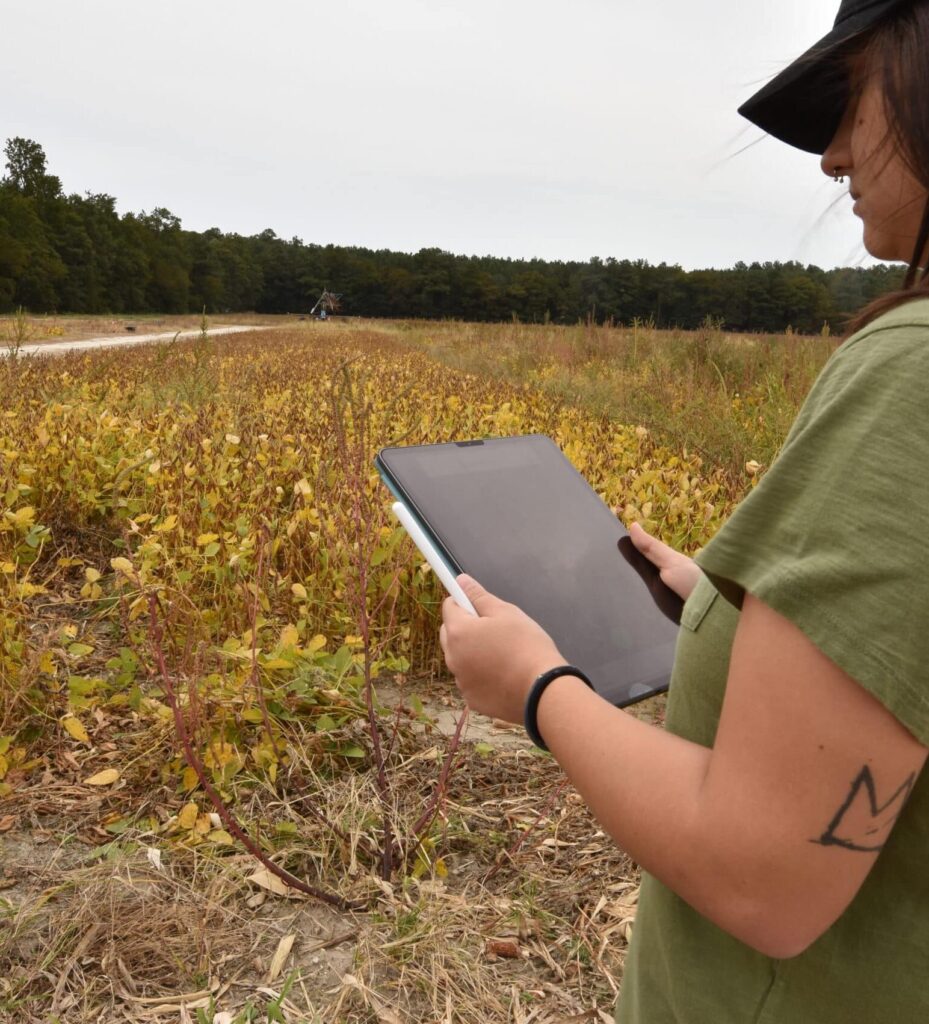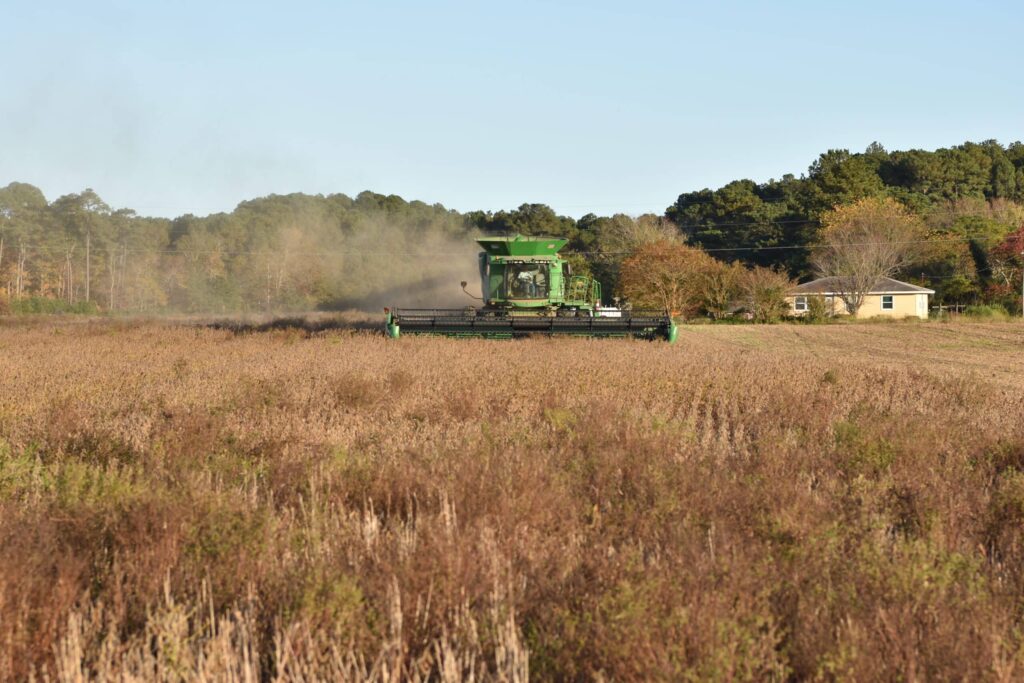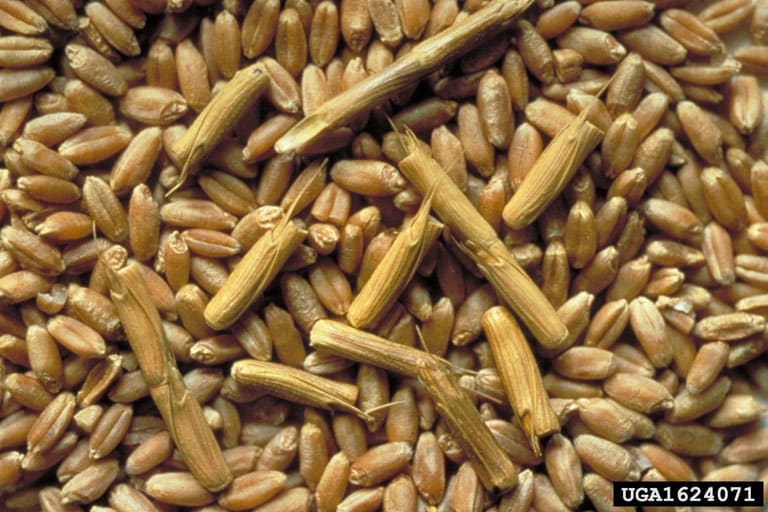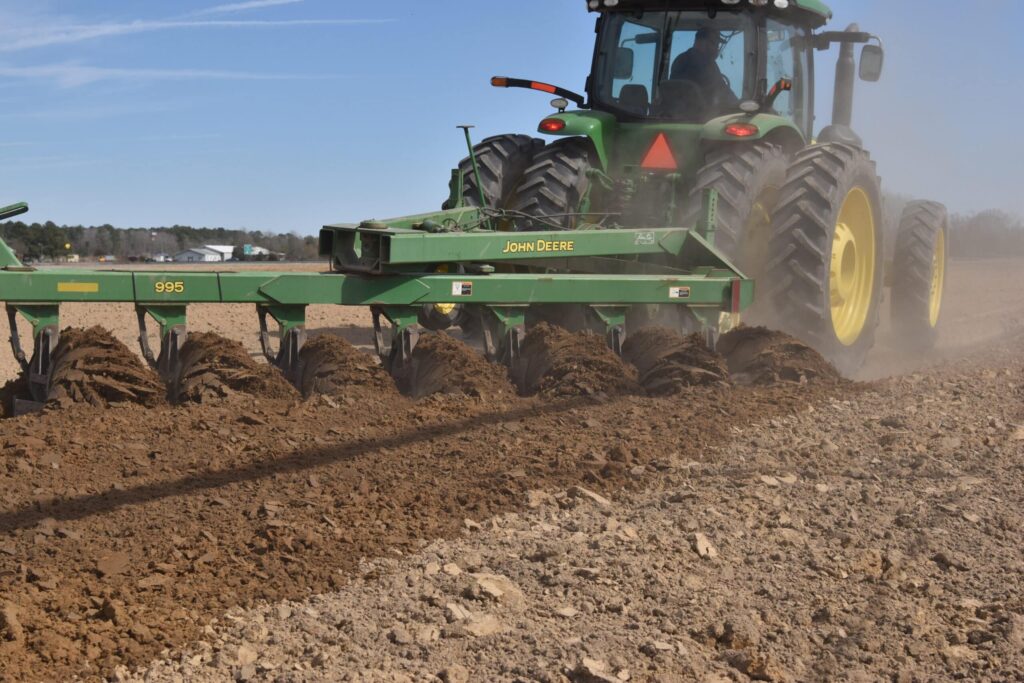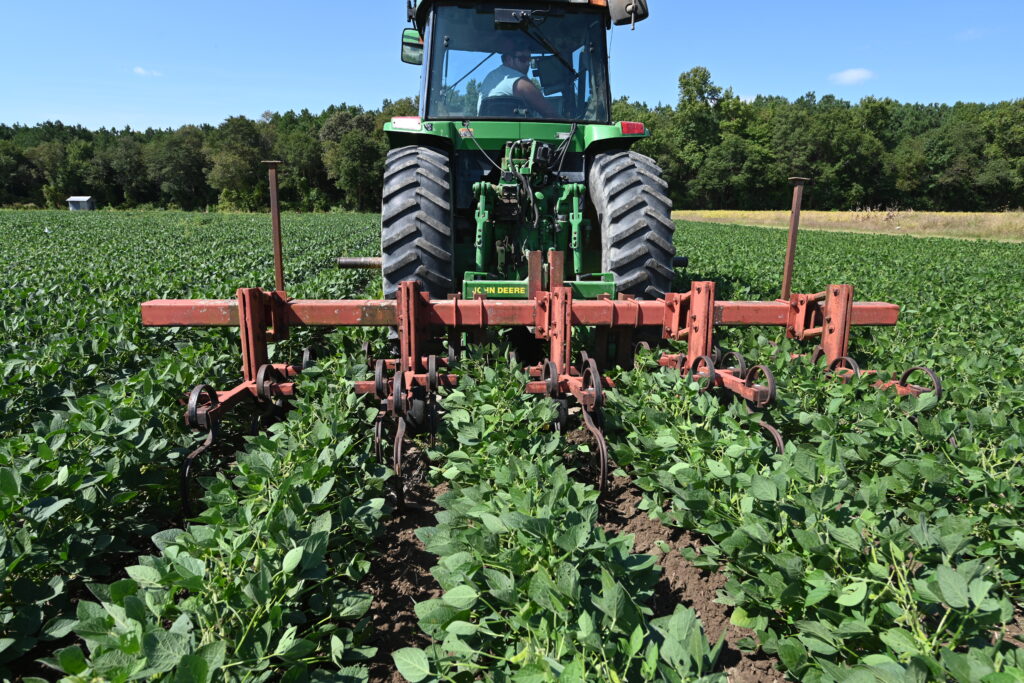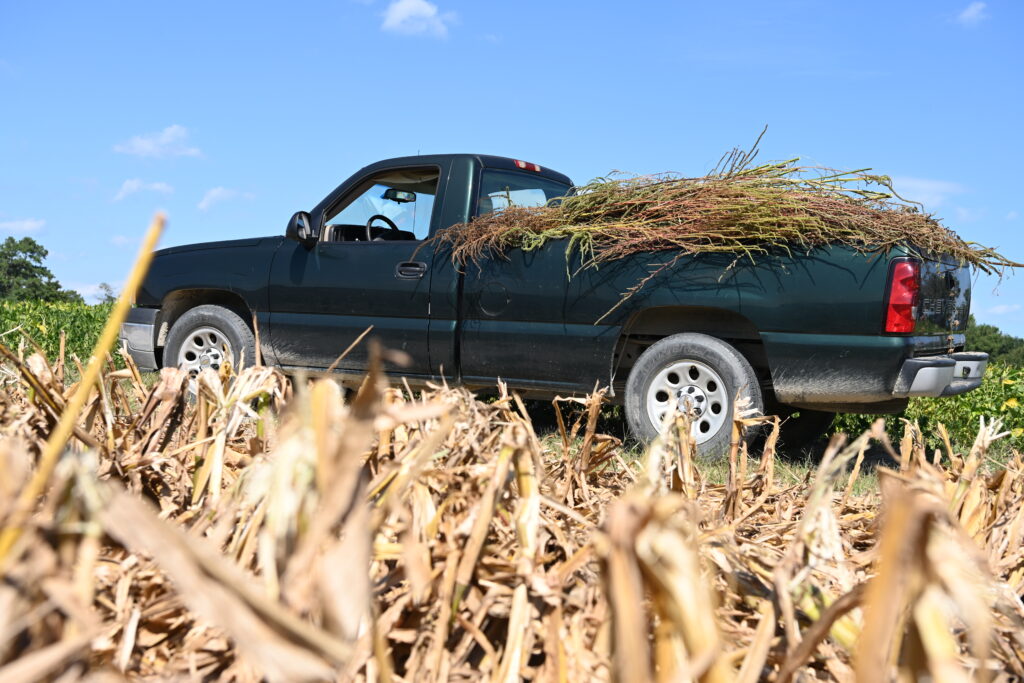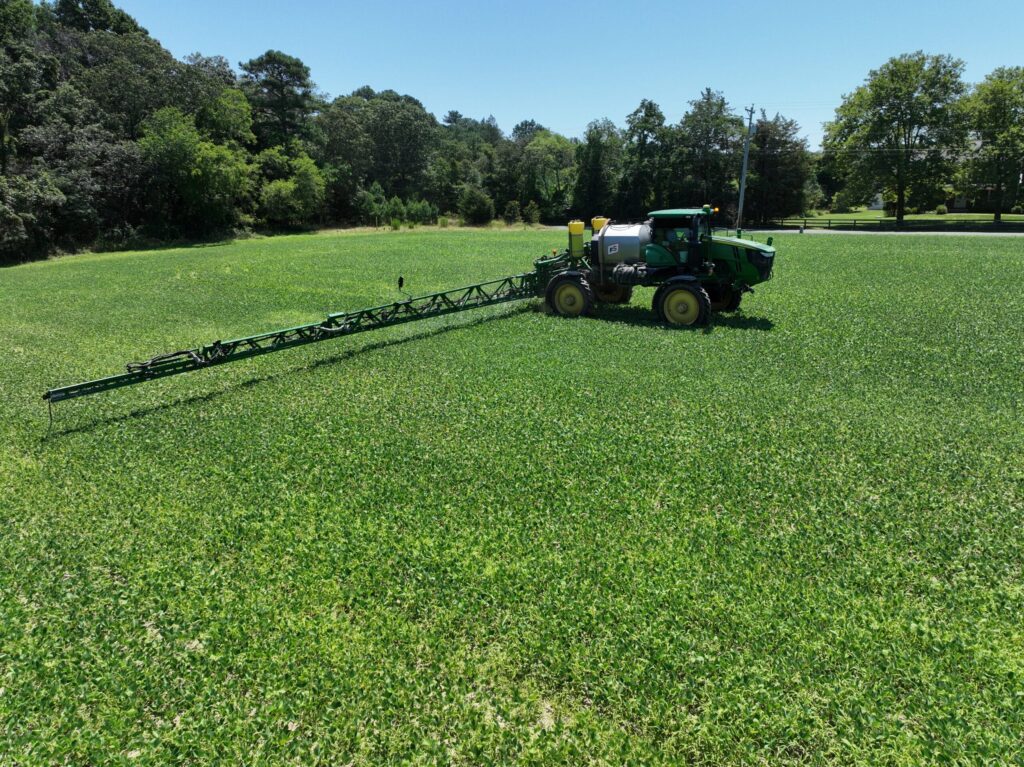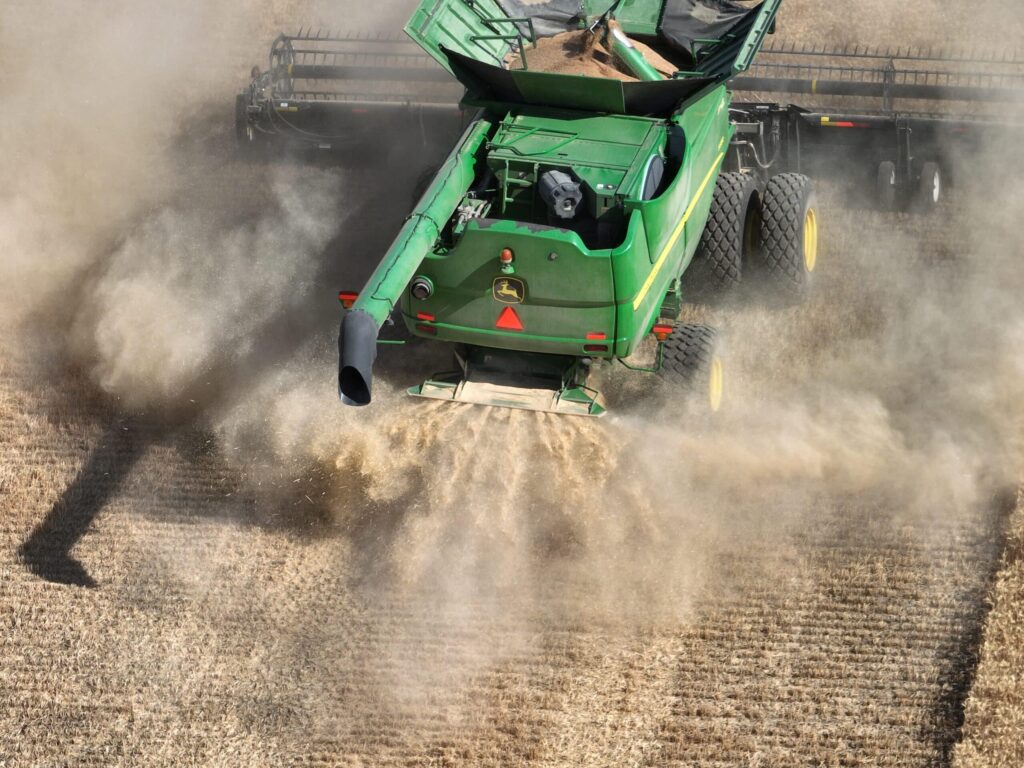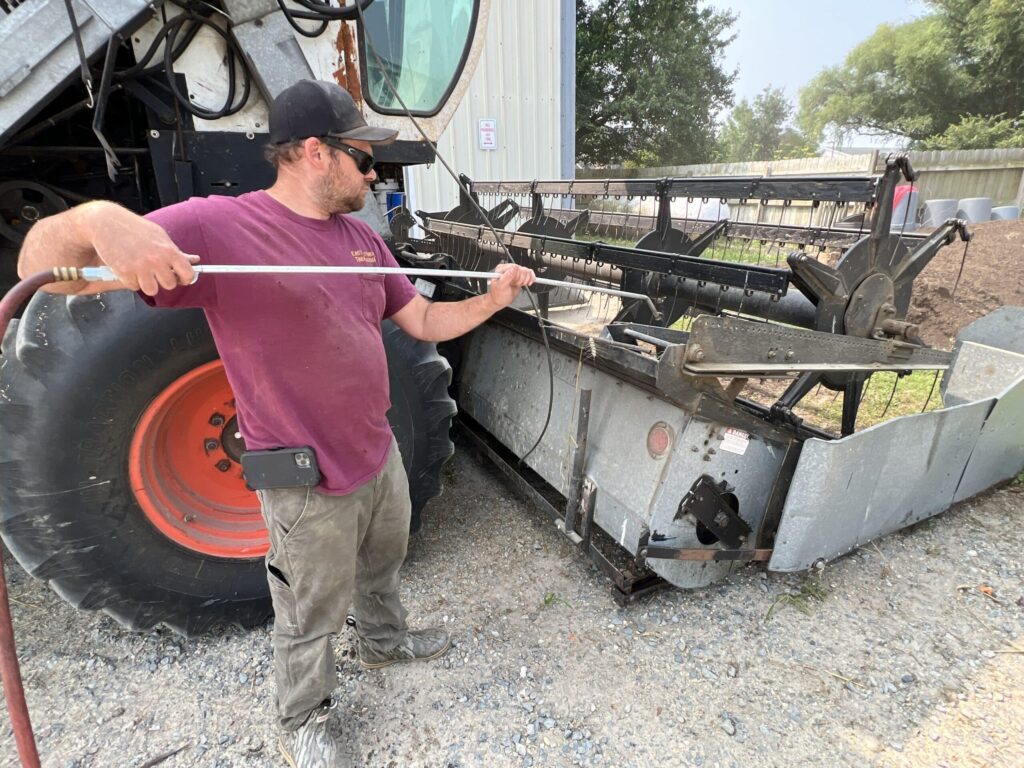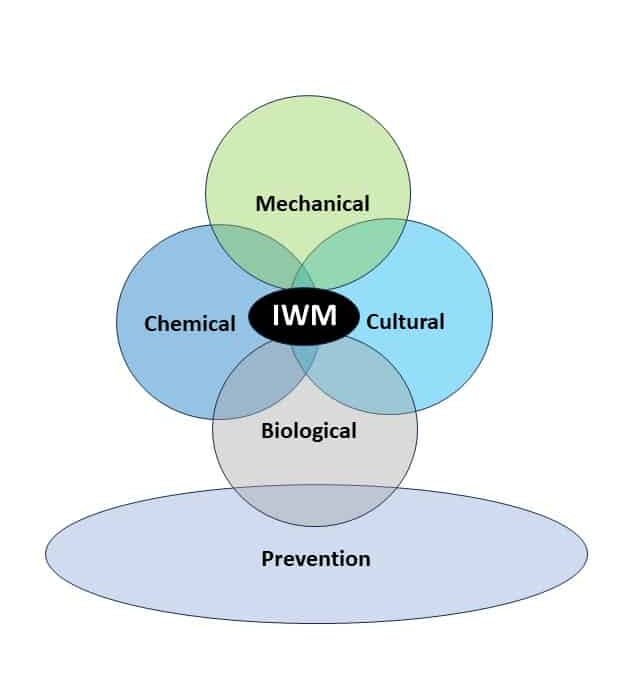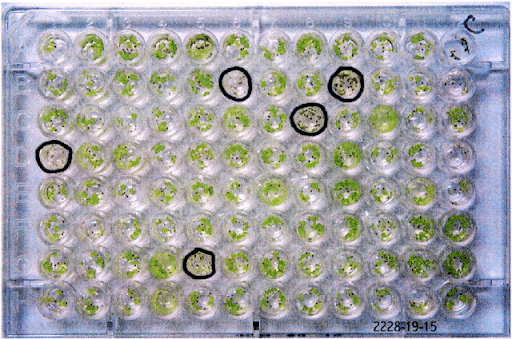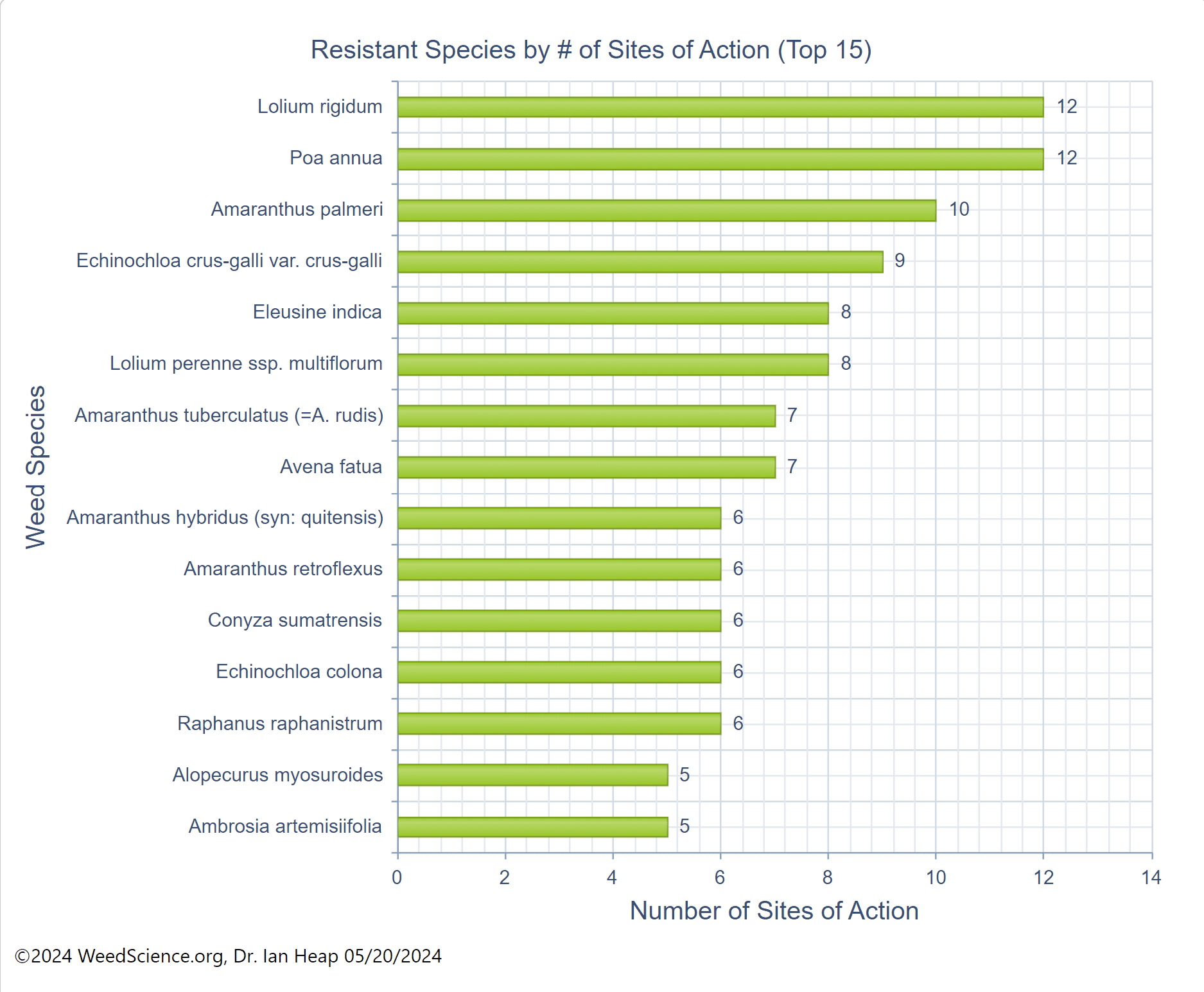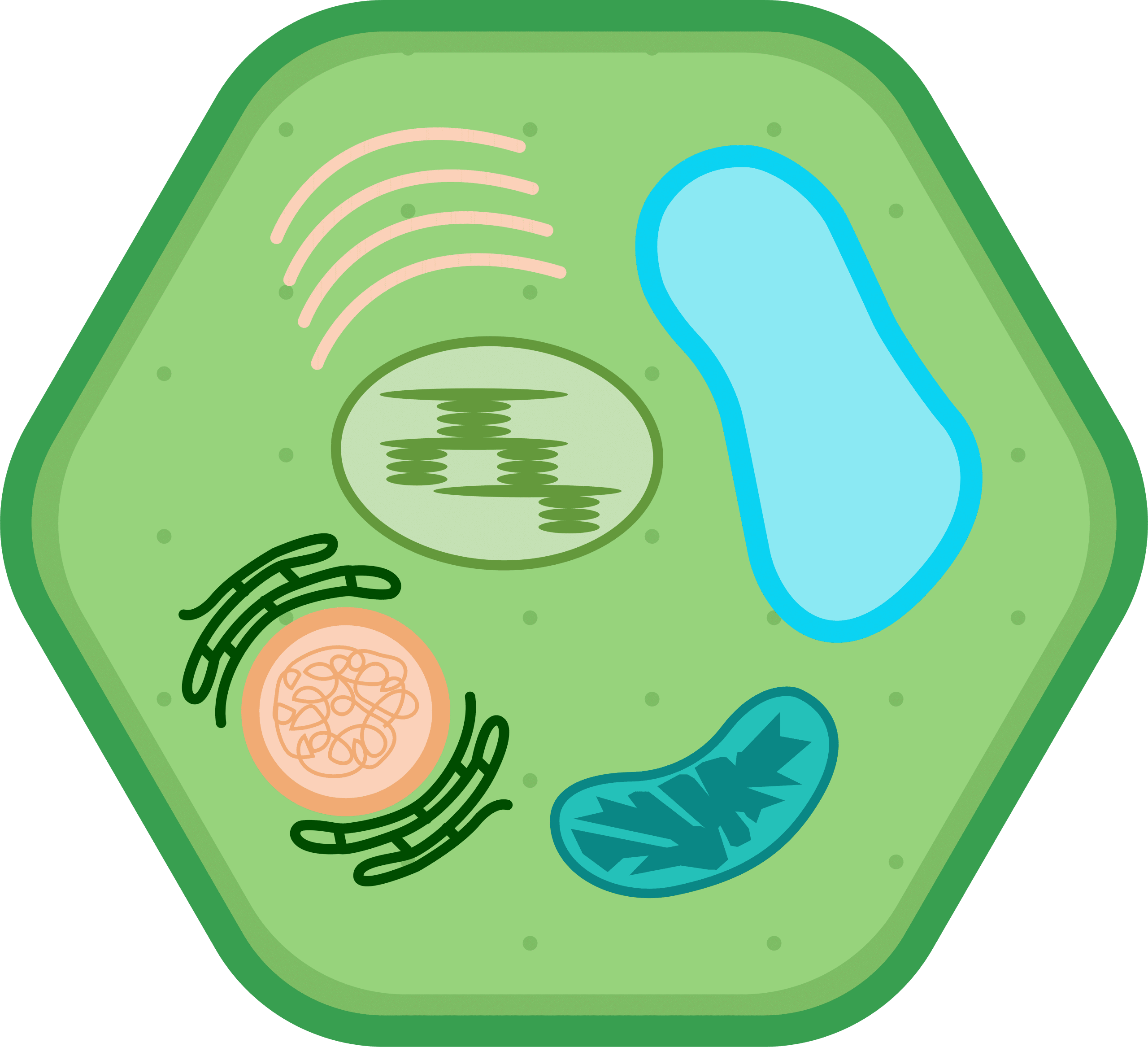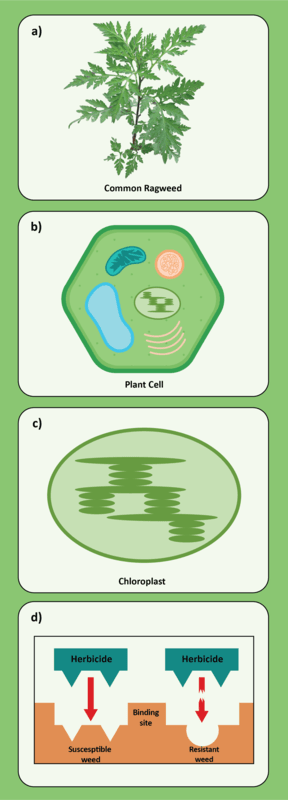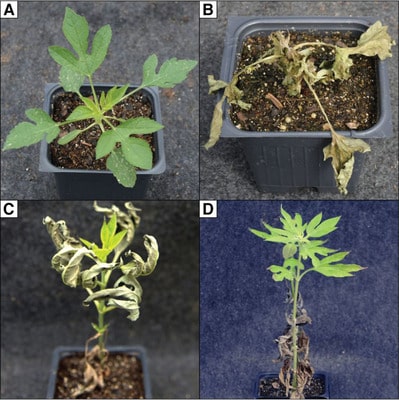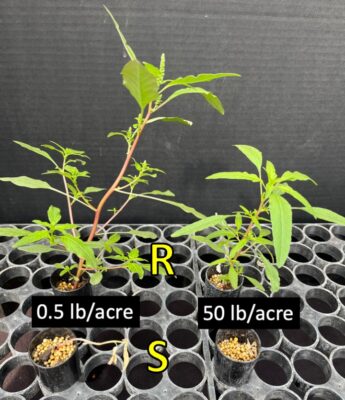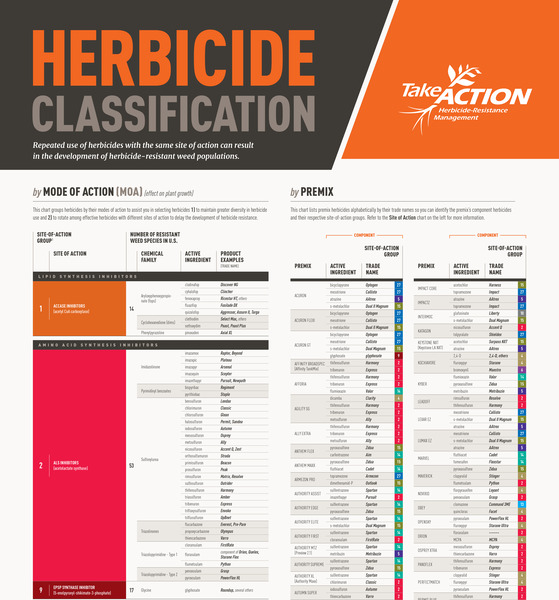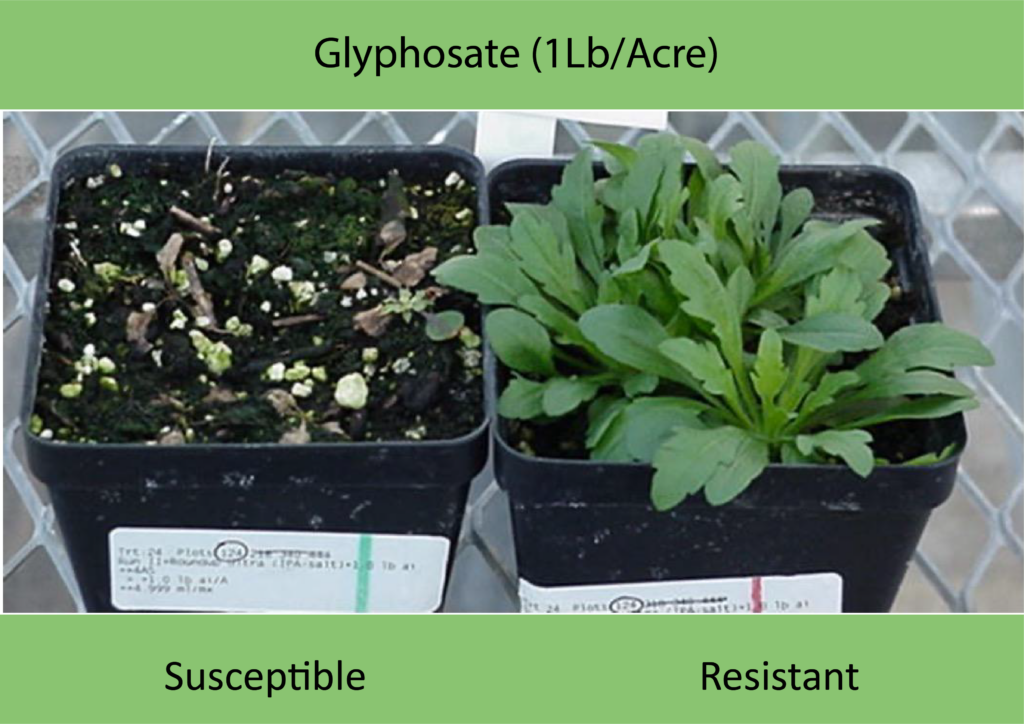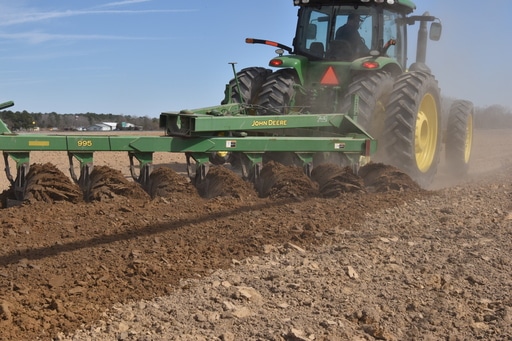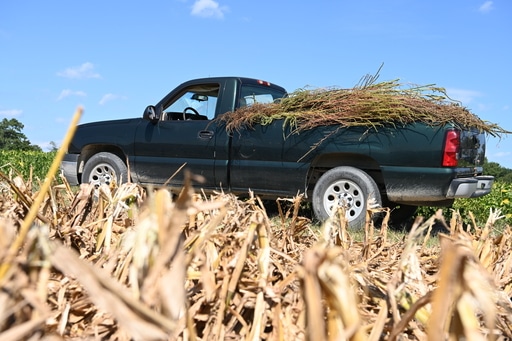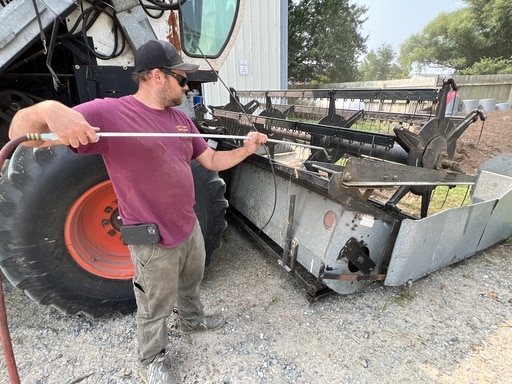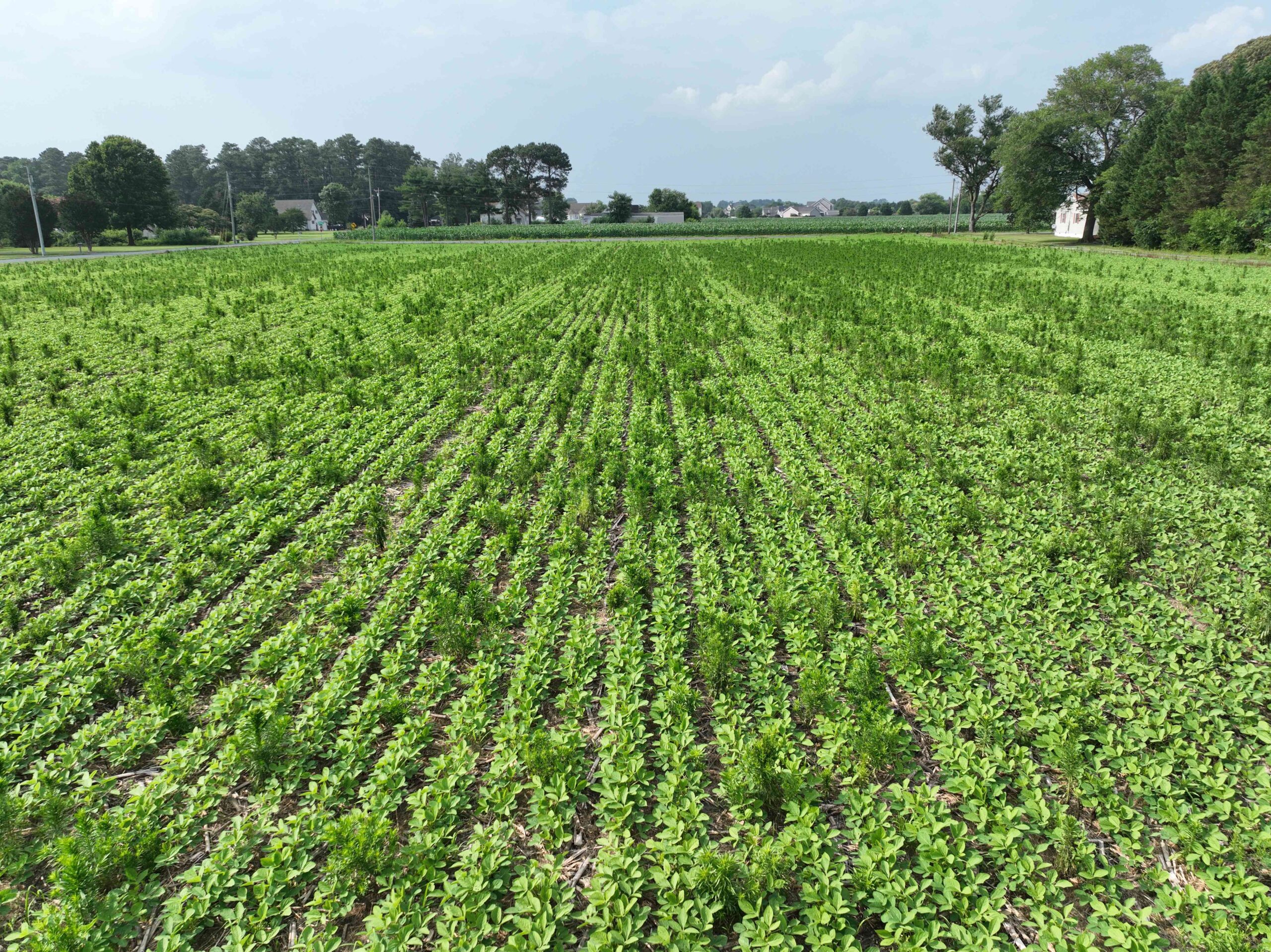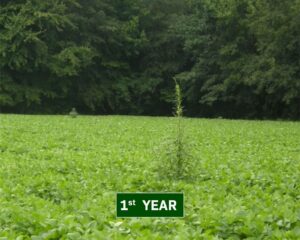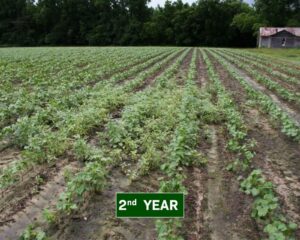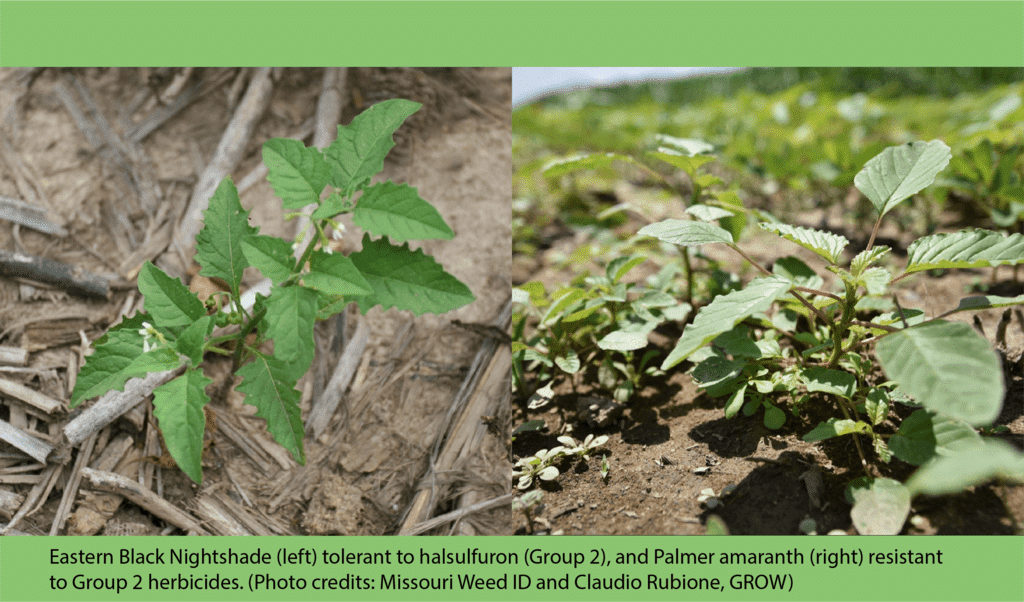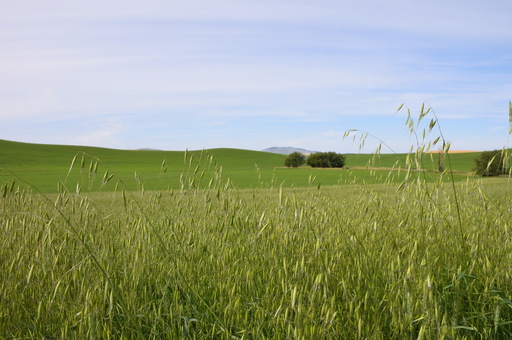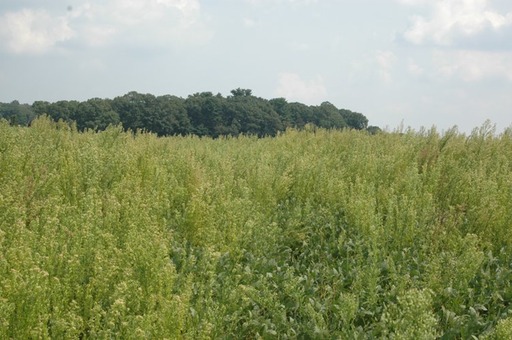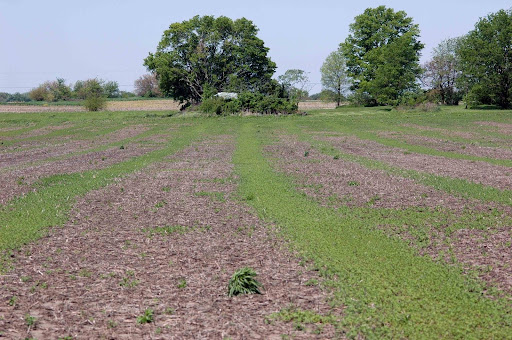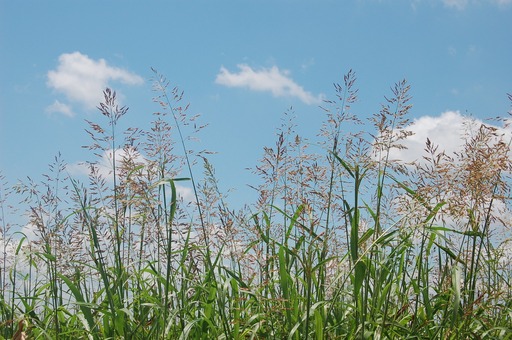It can be tricky to find weed management methods that lower herbicide inputs but still work for your production system if you’re in a dry climate and battling herbicide resistance. Dr. Breanne Tidemann in western Canada is investigating if chaff lining could be one answer.
Chaff lining is a low-tech and low-cost D.I.Y. form of harvest weed seed control. The combine filters weed seeds and neatly deposits them in a narrow row behind the combine along with the crop’s chaff residue. Previous research from Iowa has found that chaff lining is capable of corralling 99% of weed seeds into chaff lines representing just 5% of the field, making those weeds an easier target for elimination.
But what actually happens to the weed seeds left in the chaff line? That’s what Tidemann and her team have spent two years of research exploring. Ultimately, they found that chaff lining could reduce weed emergence in some scenarios, but this effect was highly dependent on the amount of chaff produced in a harvest and the weed species.

Tidemann tested chaff lining in several crops including canola, peas, spring wheat, spring barley, and fall rye, all grown in the Canadian Prairies, a semi-arid environment characterized by snowy winters and mild summers. Tidemann evaluated chaff lining’s effect on several weeds, including wild oat, volunteer canola, and kochia.
How Much Chaff Is Needed?
One big takeaway? It takes a lot of chaff to smother a weed seed, Tidemann says!
Over 12,000 pounds per acre of chaff was required to reduce volunteer canola emergence by 90%, even with the most weed-suppressing chaff (fall rye). To halve wild oat emergence, over 16,000 pounds per acre of chaff was required.
Achieving this amount of chaff is difficult. Farmers collect around 300 to 500 pounds per acre of chaff in crops like barley, peas, and oats, according to North Dakota State University. Similarly, a soybean yield of 50 bushels per acre creates about 400 pounds of chaff per acre, according to Virginia Tech researchers. There is little research on the average amount of chaff produced by western Canadian farmers.
“If you don’t disturb the chaff line, it does prevent emergence of some of those weeds if you have enough chaff.” Tidemann notes.
What happens when you have too little chaff? Light chaff volume retained moisture and actually increased weed emergence. Weeds like wild oats, which germinate from deep in the soil, also went unaffected by light chaff lines. “Wild oat is a grass weed that can happily emerge from depth, so adding three to four inches of chaff didn’t deter it all that much,” Tidemann says.
Chaff Lines Provide a Good Winter’s Nap
Chaff lines sheltered the weed seeds from Canada’s harsh winters, despite sometimes lowering weed emergence. “We’re actually protecting it from our -30 and -40 degrees Celsius weather [-22 and -40 Fahrenheit],” Tidemann explains. “We’re essentially putting a blanket on the weed seeds.”
Chaff lining didn’t affect most of the weed seeds’ viability because of this shelter, and 70% of the weed seeds that did show a difference had increased viability. Kochia was the lone weed species whose viability decreased (18% less) after overwintering in a pea chaff line.
Your crops don’t go unaffected either. Chaff lines reduced crop emergence when intersecting the rows. Chaff lines intersecting canola rows reduced canola emergence by roughly 4 plants per square foot. “When the recommended target plant stand is 5 to 7 plants per square foot, that’s a problematic reduction!” Tidemann notes.
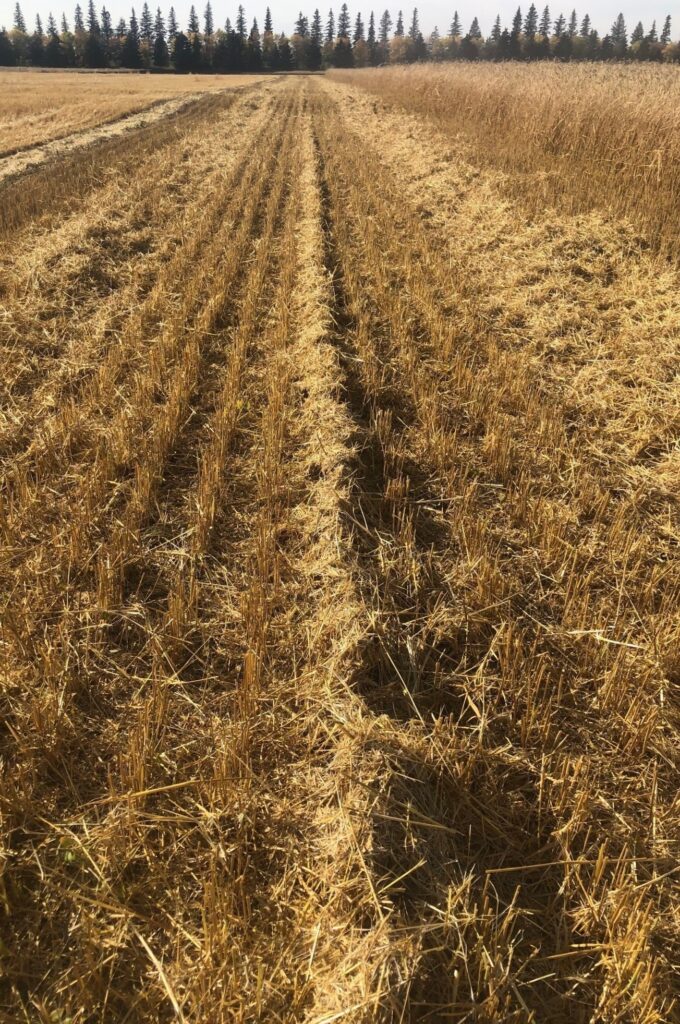
Combining chaff lining with diverse crop rotations and increased seeding rates can throw weeds off their game, disrupting their lifecycle and suppressing their emergence. Western Canadian prairie farmers tend to stick to a canola-wheat or canola-wheat-pulse rotation, which doesn’t create much opportunity for weed life cycle disruption.
Suggestions for Implementation
Chaff lining is a relatively cheap way of tidying your field by corralling weed seeds, despite not being the most effective HWSC implementation in the Canadian Prairies. In Iowa, chaff lining moved 99% of waterhemp seeds to just 5% of the examined field, and reduced waterhemp emergence by 60%.
“While chaff lining has a significantly lower adoption cost compared to impact mills, its efficacy in reducing weed seed viability and emergence is also significantly lower,” Tidemann writes.
Chaff lining effectively suppresses small-seeded broadleaves and weeds with shallow germination in western Canada’s climate. Achieving large amounts of chaff to suppress large-seeded and deep-germinating weeds can be tricky in certain crops and in poor weather. Even then, don’t expect the weed seedbank to immediately disappear.
“You’re still going to have weeds outside of that chaff line for a few years because you’ve already got a weed seedbank there, and those weed seeds in chaff lines are still viable,” Tidemann explains.
For the best results, farmers in climates like the western Canadian Prairies looking to implement chaff lining should also consider removing chaff from fields entirely, upping seeding rates, diversifying the crop rotation, and integrating other weed management tactics such as seed impact mills.
Explore GROW’s website for more information about chaff lining, chaff lining farmer testimonials, harvest weed seed control, and integrated weed management.
Article by Amy Sullivan, GROW; Header and feature photo by Dr. Breanne Tidemann, Agriculture and Agri-Food Canada.

